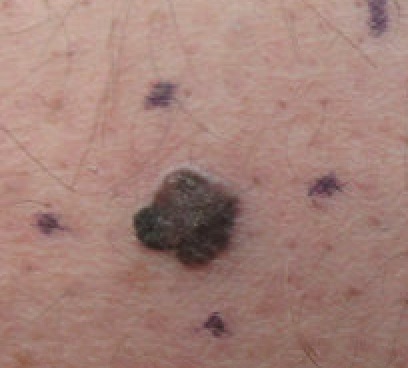
Melanoma is a type of skin cancer that begins in the cells responsible for producing melanin, the pigment that gives skin its color. Medical professionals use a staging system to describe the extent of the cancer’s growth and spread when discussing a melanoma diagnosis. This staging process helps determine the characteristics of the melanoma and outlines a treatment plan. Understanding these stages can help clarify the meaning of a diagnosis at each level.
Stage 0: Early Detection
Stage 0 melanoma, also known as melanoma in situ, represents the earliest form of the disease. At this stage, the cancerous cells remain confined to the epidermis, the outermost layer of the skin. Because the cells have not penetrated deeper into the skin, they remain non-invasive. Early detection at this stage is significant, as the condition is highly localized.
Stage I: Localized Growth
In Stage I, the melanoma is still localized but has progressed beyond the top layer of skin. The tumor’s thickness defines whether the skin over the tumor has broken down, a feature known as ulceration. This stage indicates that the cancer has started to invade the layers of skin beneath the epidermis but has not yet spread to lymph nodes or distant sites.
Stage I Characteristics
Stage I is typically categorized based on the Breslow depth, which measures the thickness of the primary tumor. A thinner tumor without ulceration is characteristic of an earlier Stage I diagnosis. The presence or absence of ulceration is a key factor in determining the stage. It can indicate a more rapidly growing tumor.
Stage II: Tumor Expansion
In Stage II, the melanoma tumor has grown thicker than in Stage I and has advanced further into the skin. At this stage, the cancer has not yet spread to nearby lymph nodes or other parts of the body. Stage II is sub-categorized based on tumor thickness and the presence of ulceration. The risk of the melanoma spreading is higher in Stage II compared to earlier stages due to the increased tumor depth.
Factors in Stage II
The primary determinants for Stage II are the tumor’s thickness and its status of ulceration. A Stage II diagnosis means the melanoma has grown deeper into the dermis but remains confined to the original tumor site. Regular monitoring and follow-up are necessary for individuals diagnosed at this stage.
Stage III: Lymph Node Spread
Stage III occurs when melanoma cells spread from the primary skin tumor to nearby lymph nodes or to skin or subcutaneous tissue en route to the lymph nodes. Doctors refer to this as regional metastasis. A Stage III diagnosis does not mean the cancer has spread to distant organs, but it has moved beyond the original site into the lymphatic system. The extent of lymph node involvement helps determine the specific sub-stage within Stage III.
Take Action Against Melanoma
Understanding the stages of melanoma can highlight the benefits of recognizing changes in your skin. Regular self-examinations and being aware of new or evolving moles are proactive steps in maintaining skin health. If you notice any concerning spots or changes, consult with a medical professional for an evaluation. You can find a qualified specialist in your area to address your skin health concerns. Find a surgeon near you to begin the conversation.





